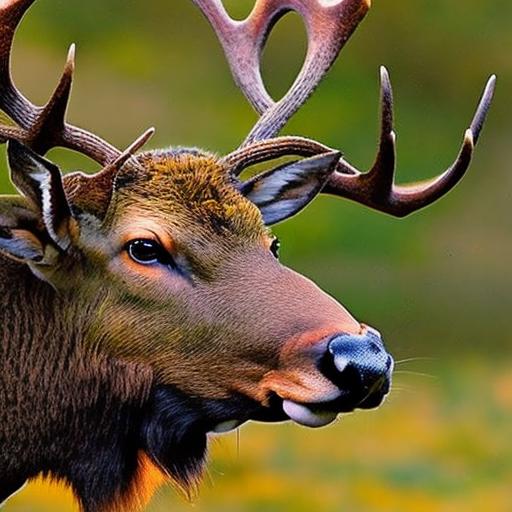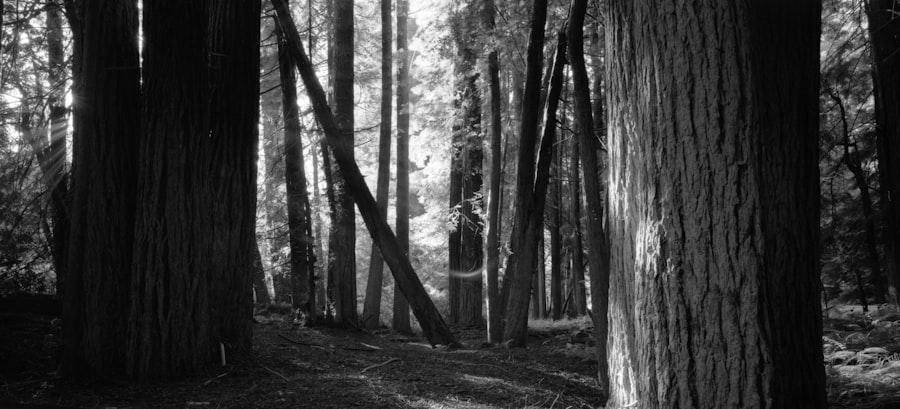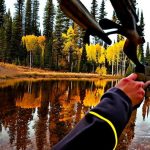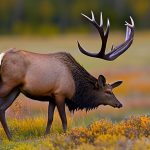Your cart is currently empty!

From Planning to Packing: A Guide to DIY Elk Hunting

DIY elk hunting is an exhilarating adventure that attracts outdoor enthusiasts from all walks of life. The challenge of tracking and stalking these majestic creatures in their natural habitat is a test of skill, patience, and endurance. Whether you are an experienced hunter or a novice looking for a new challenge, elk hunting offers a unique and thrilling experience.
The thrill of DIY elk hunting lies in the unpredictability of the hunt. Elk are intelligent and elusive animals, making them a challenging target. Unlike hunting on private land or with a guide, DIY elk hunting requires you to rely solely on your own skills and knowledge. It is a true test of your abilities as a hunter and an opportunity to connect with nature in a profound way.
Key Takeaways
- DIY elk hunting requires thorough pre-hunt planning and research on elk habitats and seasons.
- Navigating the legalities of elk hunting requires obtaining the necessary permits and licenses.
- Essential gear and equipment for a successful elk hunt include a quality rifle, binoculars, and proper clothing.
- Physical preparation is crucial for a successful elk hunt, including conditioning your body and practicing shooting skills.
- Scouting and identifying patterns in elk behavior is key to successful tracking and stalking techniques.
Pre-Hunt Planning: Researching Elk Habitats and Seasons
Before embarking on a DIY elk hunt, it is crucial to thoroughly research elk habitats and seasons. Elk can be found in various regions across North America, but they have specific preferences when it comes to their habitat. They are typically found in mountainous areas with dense forests, open meadows, and access to water sources. By understanding their preferred habitats, you can narrow down your search and increase your chances of success.
In addition to researching elk habitats, it is important to understand the different seasons for elk hunting. Each state has its own regulations regarding hunting seasons, so it is essential to familiarize yourself with the specific rules and dates for the area you plan to hunt in. Elk hunting seasons are typically divided into archery, muzzleloader, and rifle seasons, each with its own set of regulations and limitations.
Permitting and Licensing: Navigating the Legalities of Elk Hunting
Obtaining the necessary permits and licenses is an important part of DIY elk hunting. Each state has its own requirements for hunting elk, including residency restrictions, tag quotas, and application deadlines. It is crucial to thoroughly research the specific regulations for the state you plan to hunt in and ensure that you are in compliance with all legal requirements.
To obtain a hunting license and elk tag, you will typically need to apply through a lottery system. The number of tags available is limited, so it is important to submit your application early and be prepared for the possibility of not being selected. If you are fortunate enough to be drawn for a tag, you will need to purchase the appropriate license and any additional permits required by the state.
Staying compliant with hunting regulations is not only important for legal reasons but also for the conservation of elk populations. It is crucial to follow all hunting regulations, including bag limits, shooting hours, and weapon restrictions. By doing so, you can ensure that elk populations remain healthy and sustainable for future generations of hunters.
Gear and Equipment: Essential Tools for a Successful Elk Hunt
| Item | Description |
|---|---|
| Rifle | A high-powered rifle with a scope is essential for taking down an elk. |
| Ammunition | Make sure to bring enough ammunition for your rifle, as well as a backup supply. |
| Binoculars | Good quality binoculars will help you spot elk from a distance. |
| Clothing | Dress in layers and wear clothing that will keep you warm and dry in varying weather conditions. |
| Backpack | A sturdy backpack is necessary for carrying all of your gear and supplies. |
| GPS | A GPS device will help you navigate through the wilderness and keep track of your location. |
| Camp stove | A portable camp stove will allow you to cook meals and stay warm in the wilderness. |
| Tent | A durable tent will provide shelter and protection from the elements. |
| Cooler | A cooler will keep your food and drinks cold and fresh during your trip. |
| First aid kit | Always bring a first aid kit with you in case of injuries or emergencies. |
Having the right gear and equipment is essential for a successful DIY elk hunt. The most important piece of equipment is your firearm or bow. For rifle hunting, a high-powered rifle chambered in a suitable caliber such as .270 Winchester or .30-06 Springfield is recommended. For archery hunting, a compound bow with a draw weight of at least 50 pounds is necessary to effectively take down an elk.
In addition to your weapon of choice, you will need appropriate ammunition or arrows. It is important to select ammunition or arrows that are specifically designed for hunting elk, as they need to deliver enough energy to penetrate the animal’s thick hide and vital organs. It is also important to practice shooting regularly before the hunt to ensure accuracy and proficiency.
Clothing and footwear are also crucial for a successful elk hunt. You will need clothing that provides camouflage and protection from the elements. Opt for clothing made from moisture-wicking materials that will keep you dry and comfortable throughout the hunt. Layering is key, as temperatures can vary greatly in mountainous regions. Additionally, invest in a good pair of hunting boots that provide ankle support and traction on uneven terrain.
Other essential gear includes binoculars for spotting elk from a distance, a range finder for accurately judging distances, a backpack for carrying your gear and supplies, and a field dressing kit for processing the animal after a successful hunt. It is important to select gear that is durable, lightweight, and suited to the specific demands of elk hunting.
Physical Preparation: Conditioning Your Body for the Hunt
Elk hunting is physically demanding and requires a certain level of fitness. The rugged terrain and high altitudes can take a toll on your body, so it is important to condition yourself before the hunt. Building strength and endurance through regular exercise will not only improve your chances of success but also enhance your overall experience in the field.
Cardiovascular fitness is particularly important for elk hunting, as it involves hiking long distances and climbing steep slopes. Incorporate activities such as running, hiking, cycling, or swimming into your fitness routine to improve your cardiovascular endurance. Aim for at least 30 minutes of moderate to vigorous exercise most days of the week.
Strength training is also crucial for elk hunting, as it involves carrying heavy packs and traversing challenging terrain. Focus on exercises that target your legs, core, and upper body, such as squats, lunges, deadlifts, planks, push-ups, and pull-ups. Incorporate both bodyweight exercises and weightlifting into your routine to build functional strength.
In addition to cardiovascular fitness and strength training, flexibility and balance are also important for elk hunting. Stretching exercises such as yoga or Pilates can help improve flexibility and prevent injuries. Balance exercises such as single-leg squats or standing on one leg can help improve stability on uneven terrain.
Scouting: Locating Elk and Identifying Patterns

Scouting is a crucial step in the DIY elk hunting process. By familiarizing yourself with the area and identifying elk patterns, you can increase your chances of success on the hunt. Start by studying maps and topographic features of the area you plan to hunt in. Look for areas with dense forests, open meadows, and water sources, as these are likely to attract elk.
Once you have identified potential hunting areas, visit them in person to scout for elk sign. Look for tracks, droppings, rubs, and wallows, as these are indicators that elk are present in the area. Pay attention to the time of day and weather conditions when you observe these signs, as they can provide valuable insights into elk behavior.
In addition to scouting for signs of elk, it is important to observe their behavior and movement patterns. Elk are creatures of habit and tend to follow established trails and routines. By spending time in the field and observing their behavior, you can gain valuable insights into their movement patterns and use that information to your advantage during the hunt.
Hunting Techniques: Strategies for Tracking and Stalking Elk
There are various hunting techniques that can be employed when tracking and stalking elk. One common technique is calling, which involves mimicking the sounds of an elk to attract them closer. There are different types of calls that can be used, including bugles, cow calls, and estrus calls. Practice using these calls before the hunt to ensure that you can effectively communicate with the elk.
Still-hunting is another effective technique for hunting elk. This involves moving slowly and quietly through the woods, stopping frequently to glass for elk or listen for their calls. Still-hunting requires patience and a keen eye for detail, as elk can blend seamlessly into their surroundings. It is important to move slowly and scan the area carefully to avoid spooking the animals.
Spot-and-stalk is a technique commonly used in open terrain where visibility is high. This involves using binoculars or a spotting scope to locate elk from a distance and then closing the gap by moving stealthily towards them. Spot-and-stalk requires careful planning and execution, as elk have excellent eyesight and can detect movement from a long distance.
Regardless of the hunting technique you choose, it is important to stay patient and persistent. Elk hunting can be a waiting game, and success often comes to those who are willing to put in the time and effort. Stay focused, stay alert, and be prepared to adapt your strategy based on the behavior of the elk.
Field Dressing and Processing: Preparing Your Elk for Consumption
After a successful hunt, it is important to properly field dress and process your elk to ensure that the meat is safe for consumption. Field dressing involves removing the internal organs of the animal to prevent spoilage and contamination. It is important to do this as soon as possible after the kill to preserve the quality of the meat.
To field dress an elk, start by making an incision from the base of the sternum to the anus. Be careful not to puncture any organs during this process. Once the incision is made, carefully remove the internal organs, taking care not to puncture the bladder or intestines. It is important to remove all organs, including the heart, lungs, liver, and kidneys.
After field dressing, it is important to cool down the meat as quickly as possible. This can be done by hanging the carcass in a cool, shaded area or by placing ice packs inside the body cavity. Cooling down the meat helps prevent bacterial growth and ensures that it stays fresh until it can be properly processed.
Processing an elk involves breaking down the carcass into manageable cuts of meat. This can be done at home or at a professional butcher shop. If you choose to process the meat yourself, it is important to have the necessary tools and equipment, including a sharp knife, a bone saw, and a meat grinder. Follow proper food safety guidelines during the processing process to prevent contamination and ensure the quality of the meat.
Packing Out: Tips for Efficiently Transporting Your Elk
Packing out an elk after a successful hunt can be a challenging and physically demanding task. Elk are large animals, and transporting the meat and antlers can be a logistical challenge. It is important to be prepared and have a plan in place before the hunt to ensure that you can efficiently pack out your elk.
One of the most important considerations when packing out an elk is weight distribution. It is important to distribute the weight evenly between your pack and any additional equipment you may be carrying. This will help maintain your balance and prevent strain on your back and joints.
Invest in a good quality pack that is specifically designed for hauling heavy loads. Look for a pack with a sturdy frame, padded shoulder straps, and a waist belt for added support. It is also important to pack your gear strategically to ensure that it is easily accessible when needed.
When packing out an elk, it is important to take breaks and pace yourself. Elk hunting can be physically demanding, and it is easy to overexert yourself if you push too hard. Take frequent breaks to rest, hydrate, and refuel. Listen to your body and know your limits.
It is also important to stay safe during the packing out process. Hunting in remote areas can present various hazards, including steep slopes, slippery terrain, and unpredictable weather conditions. Always carry a first aid kit, a map and compass or GPS device, and a means of communication in case of emergencies.
Reflecting on the Adventure of DIY Elk Hunting
DIY elk hunting is an adventure like no other. It offers outdoor enthusiasts the opportunity to test their skills, connect with nature, and experience the thrill of the hunt. From pre-hunt planning to field dressing and processing, every step of the process is an opportunity to learn and grow as a hunter.
By researching elk habitats and seasons, obtaining the necessary permits and licenses, and investing in the right gear and equipment, you can set yourself up for a successful hunt. Conditioning your body through physical preparation and scouting for elk patterns will further increase your chances of success.
During the hunt, employing effective hunting techniques and staying patient and persistent will be key. After a successful kill, properly field dressing and processing the elk will ensure that the meat is safe for consumption. Finally, efficiently packing out the elk will complete the adventure.
Reflecting on the adventure of DIY elk hunting, it is clear that it is not just about the kill. It is about the journey, the connection with nature, and the memories made along the way. It is an opportunity to challenge yourself, push your limits, and experience the thrill of the hunt. So, if you are an outdoor enthusiast looking for a new adventure, consider embarking on a DIY elk hunt. You won’t be disappointed.
If you’re planning a DIY elk hunt, you might also be interested in an article on the Old Oak Syndicate blog about the best time to hunt squirrels in winter. Squirrel hunting can be a great way to sharpen your skills and prepare for bigger game hunts like elk. Check out the article here for tips and insights on when and where to find squirrels during the winter season. Happy hunting!
FAQs
What is a DIY elk hunt?
A DIY elk hunt is a hunting trip where the hunter plans and executes the hunt without the assistance of a guide or outfitter.
What are the benefits of a DIY elk hunt?
The benefits of a DIY elk hunt include the ability to save money on guide fees and outfitter expenses, the opportunity to have a more authentic hunting experience, and the ability to have more control over the hunt.
What are the challenges of a DIY elk hunt?
The challenges of a DIY elk hunt include the need for extensive planning and preparation, the need for knowledge of the area and elk behavior, and the potential for safety risks.
What equipment is needed for a DIY elk hunt?
Equipment needed for a DIY elk hunt includes a hunting rifle or bow, appropriate ammunition or arrows, hunting clothing and boots, a backpack, camping gear, food and water, and a means of transportation.
What permits and licenses are needed for a DIY elk hunt?
Permits and licenses needed for a DIY elk hunt vary by state and location. Hunters should research the specific requirements for the area they plan to hunt in and obtain the necessary permits and licenses before beginning the hunt.
What are some tips for a successful DIY elk hunt?
Tips for a successful DIY elk hunt include scouting the area before the hunt, using calls and scents to attract elk, being patient and persistent, and being prepared for changing weather conditions.

Herb has been a longtime lover of the outdoors. Whether it be hunting, camping, fishing or just getting outside to reset. Proud father and animal lover. Bourbon anyone?

by
Tags:
Comments

Categories
- Big Game Hunting (301)
- Deer (202)
- Reviews (3)
- Shooting (16)
- Slingshot (1)
- Small Game Hunting (42)
- Upland Hunting (126)
- Waterfowl Hunting (3)





Leave a Reply